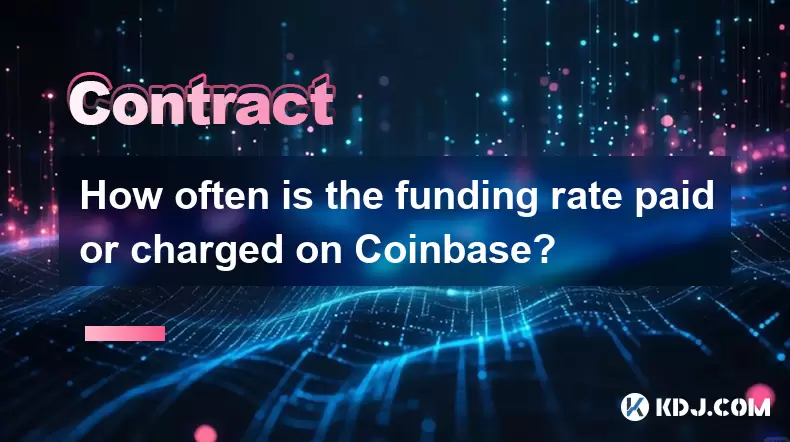-
 Bitcoin
Bitcoin $118600
0.36% -
 Ethereum
Ethereum $3855
1.06% -
 XRP
XRP $3.195
-0.09% -
 Tether USDt
Tether USDt $1.000
-0.04% -
 BNB
BNB $844.5
6.23% -
 Solana
Solana $191.3
2.83% -
 USDC
USDC $0.9997
-0.01% -
 Dogecoin
Dogecoin $0.2376
0.10% -
 TRON
TRON $0.3242
0.83% -
 Cardano
Cardano $0.8222
0.13% -
 Hyperliquid
Hyperliquid $45.26
6.53% -
 Sui
Sui $4.200
-2.56% -
 Stellar
Stellar $0.4336
-1.24% -
 Chainlink
Chainlink $18.86
0.28% -
 Hedera
Hedera $0.2796
-1.75% -
 Bitcoin Cash
Bitcoin Cash $583.3
-1.84% -
 Avalanche
Avalanche $27.06
8.09% -
 Litecoin
Litecoin $112.3
-1.16% -
 Toncoin
Toncoin $3.353
0.58% -
 UNUS SED LEO
UNUS SED LEO $8.968
-0.11% -
 Shiba Inu
Shiba Inu $0.00001395
-0.54% -
 Ethena USDe
Ethena USDe $1.001
-0.03% -
 Uniswap
Uniswap $10.76
0.69% -
 Polkadot
Polkadot $4.175
0.26% -
 Monero
Monero $326.7
1.07% -
 Bitget Token
Bitget Token $4.665
1.61% -
 Dai
Dai $0.9998
-0.02% -
 Pepe
Pepe $0.00001271
0.32% -
 Cronos
Cronos $0.1416
2.01% -
 Aave
Aave $299.3
1.15%
How often is the funding rate paid or charged on Coinbase?
Coinbase's funding rate, applied every 8 hours at 00:00, 08:00, and 16:00 UTC, helps align perpetual contract prices with spot prices—traders pay or receive based on market conditions.
Jul 28, 2025 at 02:29 pm

Understanding the Funding Rate Mechanism on Coinbase
The funding rate on Coinbase is a periodic payment exchanged between long and short traders in perpetual futures contracts. This mechanism ensures that the price of the perpetual contract stays close to the underlying asset’s spot price. Unlike traditional futures, perpetual contracts do not have an expiry date, so the funding rate acts as a balancing tool. Funding rates are typically paid or charged every 8 hours on Coinbase, aligning with major crypto exchanges like Binance and Bybit. This interval is consistent across most assets traded on Coinbase Futures.
When Exactly Is the Funding Rate Applied?
Coinbase schedules funding rate payments at three fixed times each day:
- 00:00 UTC
- 08:00 UTC
- 16:00 UTC
If you hold a perpetual futures position—long or short—at any of these timestamps, the funding rate will be automatically applied to your account. No manual action is required from the trader. The system calculates the rate based on the difference between the perpetual contract price and the index price, then credits or debits your wallet accordingly. If the funding rate is positive, longs pay shorts. If negative, shorts pay longs.
How to Check the Current Funding Rate on Coinbase
To monitor the live funding rate for any perpetual contract on Coinbase:
- Navigate to the Futures trading page
- Select a specific contract (e.g., BTC-USD PERP)
- Look for the “Funding Rate” indicator near the price chart
- Click the info icon (i) to see the next funding time and historical rates
The displayed rate is annualized, so you must divide it by 3 (since funding occurs 3x per day) to estimate your actual 8-hour cost or credit. For example, if the annualized rate is 12%, each 8-hour period would reflect a 0.5% payment (12% ÷ 24 = 0.5%).
Step-by-Step: How to Calculate Your Funding Payment
To determine how much you’ll pay or receive during the next funding interval:
- Find the current funding rate percentage (e.g., 0.01%)
- Multiply it by your position size in USD (e.g., $10,000)
- Divide by 100 to convert the percentage to a decimal
- The result is your exact funding payment
For example:
- Funding rate: 0.01%
- Position size: $10,000
- Calculation: (0.01 / 100) × $10,000 = $1.00
This $1.00 will be either deducted from your account (if long and rate is positive) or added (if short and rate is positive).
- Always check the rate before opening a position to avoid unexpected costs
- Use the Coinbase Futures API or mobile app for real-time alerts
Why Does the Funding Rate Change Every 8 Hours?
The 8-hour reset allows the market to react dynamically to shifts in sentiment. If perpetual contract prices trade significantly above the spot index (contango), longs pay shorts to discourage excessive leverage. If below (backwardation), shorts pay longs to incentivize buying. This keeps the contract price anchored to the spot price. Factors influencing the rate include:
- Market volatility
- Open interest levels
- Time until next funding event
- Arbitrage activity
Coinbase recalculates the rate using a time-weighted average of the premium over the previous 8 hours, ensuring stability and fairness.
Common Misconceptions About Coinbase Funding Rates
Some traders assume funding rates are arbitrary or exploitable. In reality:
- They are transparent and published in real time
- They are not fees charged by Coinbase—they are peer-to-peer transfers
- You only pay or receive if you hold a position at the exact funding timestamp
- Holding through multiple intervals compounds the cost or benefit
Misunderstanding this can lead to unexpected losses, especially during high volatility when rates spike (e.g., +0.1% per 8 hours = +0.3% daily).
Frequently Asked Questions
Q: Can I avoid paying funding fees on Coinbase?
Yes. Close your position before the next funding timestamp (00:00, 08:00, or 16:00 UTC). If your position is flat at that exact moment, no funding is applied.
Q: Does Coinbase charge a fee for funding rate transfers?
No. The funding rate is a direct transfer between traders. Coinbase does not take a cut—it only facilitates the mechanism.
Q: What happens if I’m on margin when funding is applied?
If your account lacks sufficient balance to cover a funding payment, Coinbase may trigger a partial or full position liquidation. Always maintain a buffer in your margin.
Q: Are funding rates the same for all cryptocurrencies on Coinbase?
No. Each asset (BTC, ETH, SOL, etc.) has its own funding rate based on its specific market conditions. Always check the rate for your exact contract.
Disclaimer:info@kdj.com
The information provided is not trading advice. kdj.com does not assume any responsibility for any investments made based on the information provided in this article. Cryptocurrencies are highly volatile and it is highly recommended that you invest with caution after thorough research!
If you believe that the content used on this website infringes your copyright, please contact us immediately (info@kdj.com) and we will delete it promptly.
- Tinubu's Grand Gesture: Super Falcons Soar with Rewards and Recognition
- 2025-07-29 02:30:12
- Rare Coin Sells for £180,000 at Auction: A Glimpse into Numismatic Treasures
- 2025-07-29 02:30:12
- Pepe Dollar vs. Bitcoin HYPER: The Crypto Supercycle Meme Showdown
- 2025-07-29 01:10:12
- BlockDAG, BNB, DOGE: The New York Minute on 2025's Crypto Frontrunners
- 2025-07-29 01:50:12
- AVAX, Solana, and the AI Token Surge: What's Hot and What's Not
- 2025-07-29 01:50:12
- XRP Price Surge Potential: Chart Analysis and What's Next
- 2025-07-29 01:55:48
Related knowledge

Why is my Bitstamp futures position being liquidated?
Jul 23,2025 at 11:08am
Understanding Futures Liquidation on BitstampFutures trading on Bitstamp involves borrowing funds to open leveraged positions, which amplifies both po...

Does Bitstamp offer inverse contracts?
Jul 23,2025 at 01:28pm
Understanding Inverse Contracts in Cryptocurrency TradingIn the realm of cryptocurrency derivatives, inverse contracts are a specific type of futures ...

What is the difference between futures and perpetuals on Bitstamp?
Jul 27,2025 at 05:08am
Understanding Futures Contracts on BitstampFutures contracts on Bitstamp are financial derivatives that allow traders to speculate on the future price...

How to find your Bitstamp futures trade history?
Jul 23,2025 at 08:07am
Understanding Bitstamp and Futures Trading AvailabilityAs of the current state of Bitstamp’s service offerings, it is critical to clarify that Bitstam...

Can I use a trailing stop on Bitstamp futures?
Jul 23,2025 at 01:42pm
Understanding Trailing Stops in Cryptocurrency TradingA trailing stop is a dynamic type of stop-loss order that adjusts automatically as the price of ...

Can I use a trailing stop on Bitstamp futures?
Jul 25,2025 at 02:28am
Understanding Trailing Stops in Cryptocurrency Futures TradingA trailing stop is a dynamic type of stop-loss order that adjusts automatically as the m...

Why is my Bitstamp futures position being liquidated?
Jul 23,2025 at 11:08am
Understanding Futures Liquidation on BitstampFutures trading on Bitstamp involves borrowing funds to open leveraged positions, which amplifies both po...

Does Bitstamp offer inverse contracts?
Jul 23,2025 at 01:28pm
Understanding Inverse Contracts in Cryptocurrency TradingIn the realm of cryptocurrency derivatives, inverse contracts are a specific type of futures ...

What is the difference between futures and perpetuals on Bitstamp?
Jul 27,2025 at 05:08am
Understanding Futures Contracts on BitstampFutures contracts on Bitstamp are financial derivatives that allow traders to speculate on the future price...

How to find your Bitstamp futures trade history?
Jul 23,2025 at 08:07am
Understanding Bitstamp and Futures Trading AvailabilityAs of the current state of Bitstamp’s service offerings, it is critical to clarify that Bitstam...

Can I use a trailing stop on Bitstamp futures?
Jul 23,2025 at 01:42pm
Understanding Trailing Stops in Cryptocurrency TradingA trailing stop is a dynamic type of stop-loss order that adjusts automatically as the price of ...

Can I use a trailing stop on Bitstamp futures?
Jul 25,2025 at 02:28am
Understanding Trailing Stops in Cryptocurrency Futures TradingA trailing stop is a dynamic type of stop-loss order that adjusts automatically as the m...
See all articles

























































































